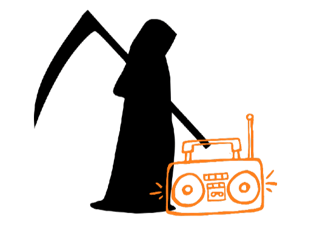Music has had significant cultural influence across the globe for centuries. Before
recording devices were available, people used their own voices to share stories
through song. Music coming through the radio was revolutionary for listeners, but
video took it a step further by pairing visual effects with engaging sound. But the
question remains: Did video kill the radio star?
Transformations in the Music Industry
In today's world, it's hard to imagine what life was like more than 70 years ago. When
Elvis Presley came on the music scene, his dance moves shocked audiences (although
they seem rather tame by today's standards). The Beatles drew screaming crowds of
fans, but many members of the older generation looked at the group with disdain due
to their shaggy haircuts and cultural influence.
A few decades later, new technologies led to even greater change. Machinery,
including synthesizers and microphones, could produce sounds that no human could
ever replicate. Music was moving into new territories.

Video Enters The Scene
Today, Music Television (MTV) is a cable channel best known for its reality television
series and awards shows. But when the channel first launched in 1981, it showed only
music videos, hence the name. Although music videos had been around for years, they
hadn't taken off as their own art form until the channel reached mainstream
audiences. Artists like Duran Duran, Madonna, and Dire Straits skyrocketed to fame by
licensing their music videos to MTV for free.
Seven years after MTV launched, the network estimated that nearly half of American
homes paid for the channel. Key artists continued to share their videos with MTV, and
it was clear that radio listeners enjoyed seeing their favorite performers on their TV
screens.
On Dec. 15, 2005 Youtube emerged on the scene. It was an immediate hit, and by the
summer of 2006 it had more than 100 million views per day. The original founders
soon ran into trouble with copyright laws and sold it to Google in Nov. 2006. It wasn’t
long before savvy marketers figured out that the platform that originated as a way of
sharing home videos could be used as a marketing tool.
Radio Stats
Although the Buggles predicted that video would kill the radio star, the reality is that
both video and radio are popular. Radio reaches millions of people through in-home
and automotive audio equipment, and the rising popularity of podcasts and online
audio broadcasts has kept radio firmly in the limelight. Far from dead, radio is currently
experiencing a significant resurrection.
According to Nielsen Media Research data, approximately 83% of Americans ages 12
and older listened to something on radio during a week. In 2020, the number of people
who downloaded podcasts from National Public Radio (NPR) increased from 11.3
million to 14 million. Listeners also download and listen to podcasts from thousands of
other content creators, demonstrating the popularity of this media form.
When considering video vs. audio marketing, it makes sense to incorporate elements
of both into your efforts. You can reach a wider audience by appealing to fans of both
platforms.
Interested in learning how radio can help grow your business? The Department of
Marketing can help.